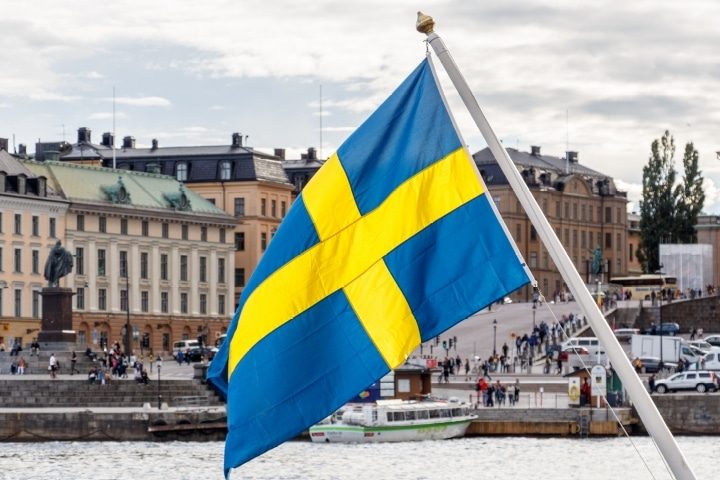
Sweden has long been known as a land of the midnight sun. But now it may be more like High Noon, with a new study showing that an increase in deadly shootings has made the Nordic nation the gun-violence capital of Europe.
As SVT Nyheter reported Wednesday (auto-translated and edited for grammar, punctuation, and style):
The Crime Prevention Council, Brå, has been commissioned to investigate the increase in deadly shootings in Sweden. Today, their study was released.
The study compared fatal shootings with 22 other European countries … between 2000 and 2019, and concluded that Sweden is at the highest level in Europe when it comes to lethal shooting violence.
The increase that Sweden reports cannot be seen anywhere else in Europe. Sweden has moved from the bottom to the top in Europe’s statistics, says Klara Hradilova-Selin, investigator at Brå.
“The increase in fatal shootings is largely limited to the 20 to 29 age group of young men,” adds Breitbart. “Between zero and four men of this age bracket are fatally shot, on average, per million people in other European countries. In Sweden, the figure is 18.”
“An analysis of the data also revealed that most young men lived in so-called ‘vulnerable areas’, with almost all coming from a migration background.”
“Vulnerable areas.” Well, as they say, them’s code words. The quoted term is a euphemism for dangerous, largely Muslim urban and sometimes suburban areas that may actually be “no-go zones”; these are neighborhoods in which civil law has broken down and to an extent been replaced by Sharia law and where authorities are often reluctant to tread for fear of violence.
Breitbart continues: “Despite the Wuhan coronavirus pandemic, Sweden saw a record 47 fatal shootings last year [in a population of 10 million], fulfilling predictions from November 2020 that the number would beat the previous year’s record.”
“Most of the fatal shootings took place in and around Stockholm,” the news organ also informs. “However, the multicultural city of Malmö saw a sharp decline, credited to the fact many of Malmö’s gang leaders were behind bars following the hacking of the encrypted chat service EncroChat, a communications tool used by criminals to organise illegal activity by European police forces.”
But Malmö is an outlier. As for Sweden in general, Håkan Jarborg, chief of police in Police Region South, contrasted the overall rise in shootings with the rest of Europe and said it was “unique.”
It wasn’t always like this, of course. Sweden once had safe streets to match its safe cars, and even in “the early 2000s, Sweden was at the bottom when it came to lethal shootings in Europe,” SVT Nyheter also tells us. “Since 2013, however, violence has increased sharply and since 2018, Sweden has occupied the top spot.”
It’s perhaps tops in rationalization, too. As to this, SVT Nyheter also quotes the aforementioned Hradilova-Selin as stating, “We do not know the reason why fatal gun violence has increased the most in Sweden.”
Yes, it’s a mystery — if you’re Barney Fife. Try this on for size, however: Sweden has long had strict gun control, but doesn’t have strict immigration control. In fact, something else that happened in 2013 was that immigration “reached its highest level since records began with 115,845 people arriving in the country,” the Express reported in 2017. This was to a great extent, do note, immigration from Muslim countries.
You can decide if this reflects causation or mere correlation. But, somehow, coming to mind here is a line uttered by a superior officer to Dirty Harry in the film Sudden Impact (1983).
“People have a nasty habit of getting dead around you,” he said.
The reality is that many European nations — such as Germany, France, and Britain — have also absorbed large numbers of Mideastern and North African migrants during the last decade.
And they’ve also experienced spikes in crime.
This brings something else to mind. In 2012, Professor Thomas Sowell wrote an article illustrating how there’s no correlation between having stricter gun-control laws and lower murder rates; to support his point, he provided numerous examples of times and places in which there were fewer firearms restrictions and more firearms but also less homicide.
“Neither guns nor gun control was the reason for the difference in murder rates,” he then explained. “People were the difference.”
The reality is that boys could and did carry firearms on New York City subways in the 1940s and ‘50s (they had rifle clubs at school) but can’t today because the people were different back then. Likewise, many people are different in Sweden now — morally, spiritually, philosophically, and culturally — than they were a couple of generations ago.
How much has immigration had to do with this? You can watch the documentary below and draw your own conclusions.
Some people behave as if immigrants are empty vessels ready to be filled with the host country’s culture as opposed to what they are: people often with a deeply ingrained and almost immutable conception of God and good. And this conception may be very far removed from your own.



